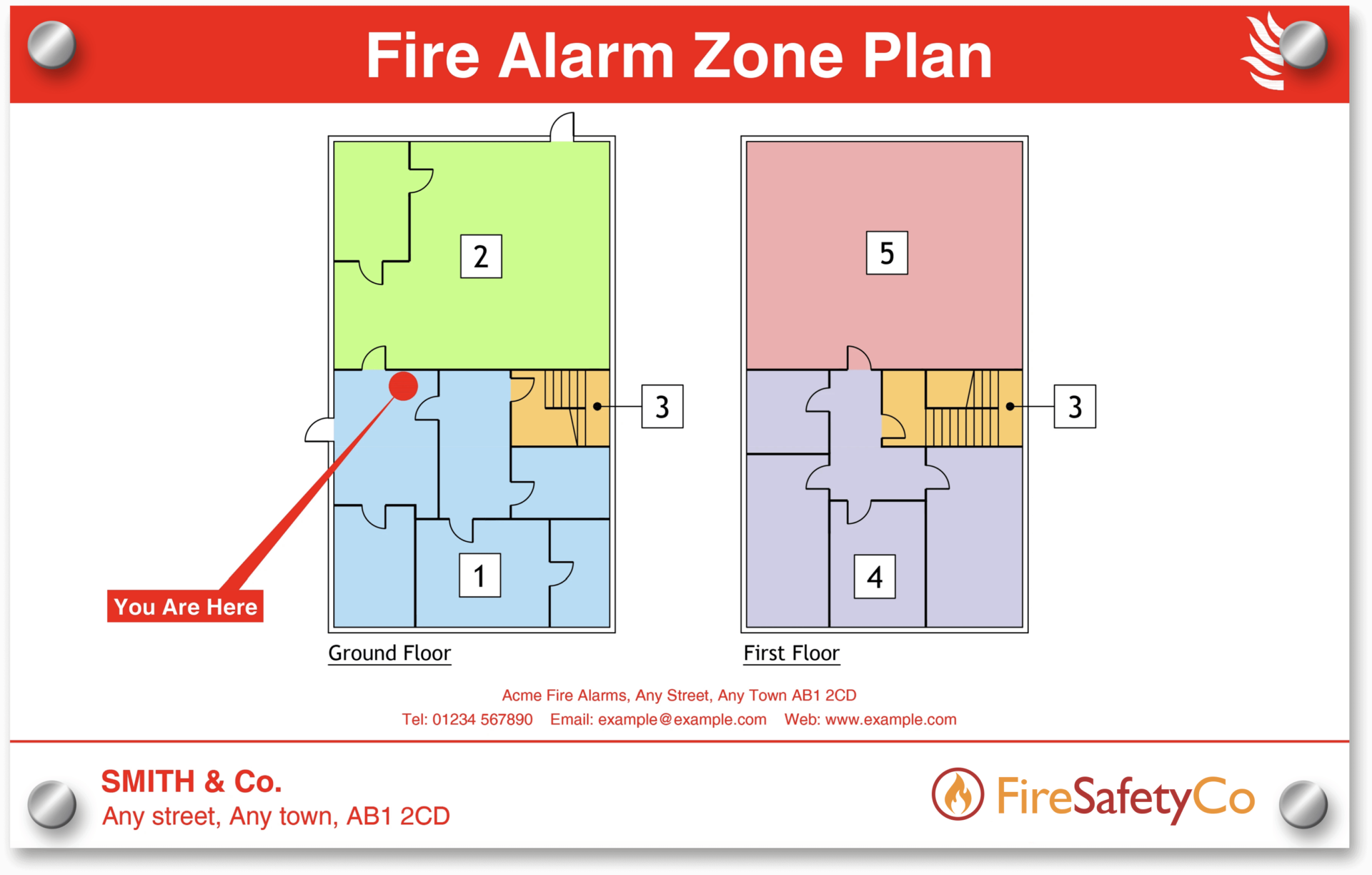News & INSIGHTS
A decade has passed since it became mandatory to provide a fire alarm zone plan upon the completion and handover of a fire alarm system installation. The recommendation first appeared in BS 5839-1:2013 and continues to be part of the recommendations of the current BS 5839-1:2017. Sadly, many systems are still being handed over to premises managers without the essential fire alarm zone plan included.
Whether your company completes their own system handover drawings and fire alarm zone plans in-house, or outsources these to a specialist such as QDOS, there are a few simple steps to follow to ensure compliance.

<br />
WHAT DOES A FIRE ALARM ZONE PLAN LOOK LIKE?
The fire alarm zone plan should be a diagrammatic representation of the building, showing at least the building entrances, main circulation areas and the division into zones. So, we’re not talking complex building plans here, a representation of the building can be a simple plan that shows how the building is laid out in a clear, understandable way. This means that it’s not acceptable to have a zone list or a block diagram that doesn’t show any entrances or circulation areas.
Remember, a fire alarm zone plan needs to be fitted next to any control & indicating equipment. So that includes repeater panels too!
<br />
<br />
CORRECTLY ORIENTATED, WHAT DOES THAT MEAN?
The plan also needs to be correctly orientated. This means, that as you look at the plan fitted adjacent to the CIE, the building is shown the same way round and includes a ‘You Are Here’ marker. For example, if there’s a door to your right as you stand and look at the fire alarm zone plan, then that door will be shown on the plan to the right of the You Are Here marker.
On larger sites, particularly where zones cover more than one building and the fire alarm zone plan shows a full site plan with access roads, it may be appropriate to show the site in a familiar orientation to both staff and the fire and rescue service. You should check with all interested parties in these situations involving larger and more complex fire alarm systems.
<br />
SMALLER SYSTEMS
But what about very small systems where only one fire zone is used? The recommendations of BS 5839-1:2017 do not preclude systems of just one zone. Remember, the zone plan shows the extent of the building covered by the system and the main circulation areas to conduct an efficient search in the event of an alarm.
.
<br />
OTHER FIRE SAFETY INFORMATION
It can also be useful to add other relevant information such as callpoint locations for weekly testing. To avoid confusion, keep additional information to a minimum so that the main purpose of displaying the fire alarm zones isn’t lost. Fire alarm ‘As Fitted’ information should be kept separate and provided to the premises manager on drawings to keep in a document box or electronically. Full system wiring layouts combined onto a zone plan often create a rather confusing drawing, exactly the opposite of what a fire alarm zone plan is there to achieve in the event of an alarm.
<br />
AND TO FINISH…
We hear of challenges faced by fire alarm installers and maintenance providers, where premises managers don’t want any additional notices on their wall or feel that a fire alarm zone plan would spoil the aesthetics of their building. At QDOS, we’ve become the benchmark for clear, compliant and professional-looking zone plans. Your customers can be assured that the fire alarm zone plan will comfortably integrate with all other fire safety signage, with suitable finishes available for any location from industrial to offices to high-end venues.
.
Follow us
LinkedIn: QDOS
Instagram: @qdos.biz Twitter: @QDOSCAD
Trusted by
Contact Us
Fill out our contact form below with your enquiry and one of our team will get back to you ASAP.